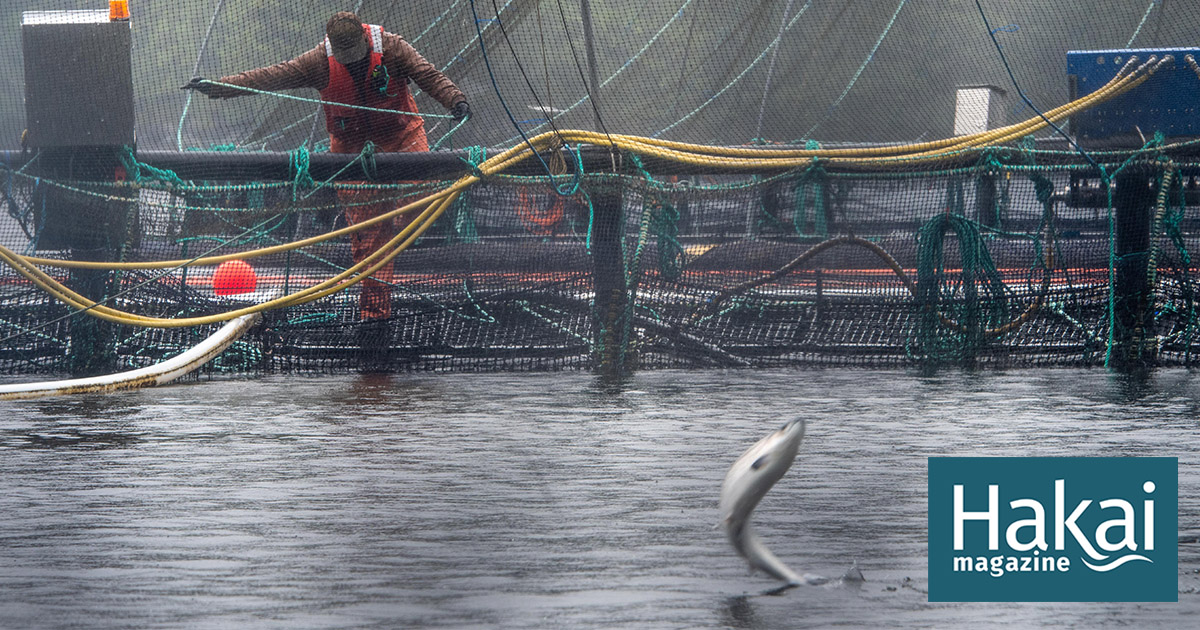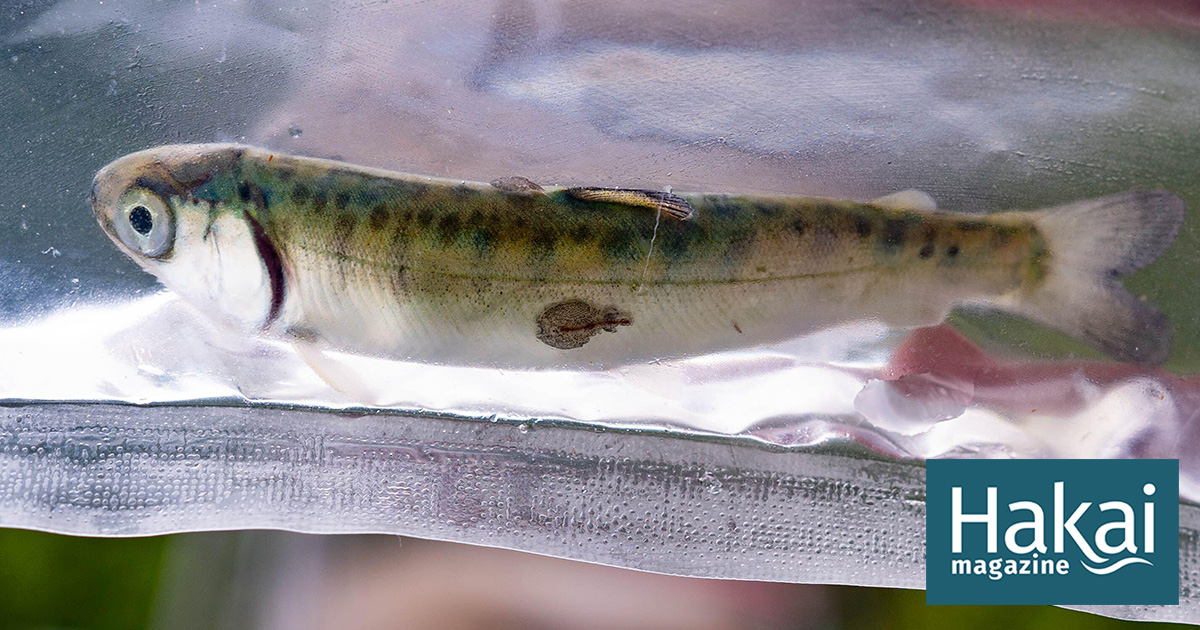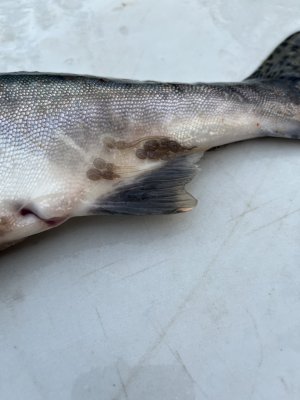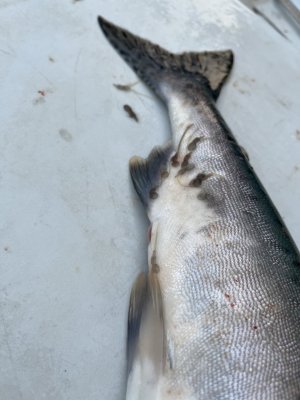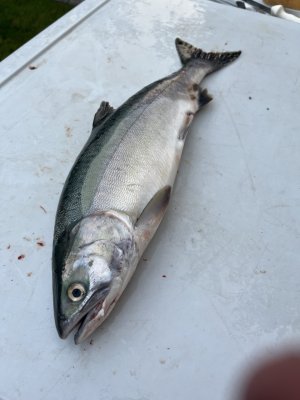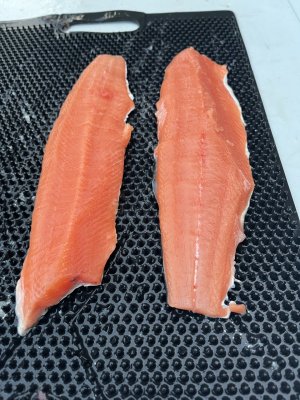One other thought, for all the data do FFs count the dead fish? Or state the reason for die offs?
Good questions, Fishing?
Short answer is “yes” to all of them.
Slightly longer answers are:
Mortalities: Fish farms do count their dead fish when they clean the morts up – which may be a few days in between return trips to that specific cage by the divers. They have a decent estimate as to how many fish are in which cages. So, they do have a decent estimate of mortalities – forensically – a few days down the road.
But reporting depends on definitions/semantics contained within the Fish Health Management Plan submitted to DFO; while actions are described in the
private, proprietary Standard Operating Procedures (SOPs).
A “
Mortality event” is defined as:
FW Facilities:
- Fish mortalities with losses exceeding 4% of the current facility inventory within a 24-hour period; or
- Fish mortalities exceeding a 4% cumulative loss within a 4-day period.
SW facilities:
- fish Mortalities or losses reaching 1% of the current Stock Inventory, within a 24 hour period; or
- fish Mortalities or losses reaching 2.5% of current Stock Inventory, within a five Day period.
Presumably, the rate that triggers a response is higher in the FW facilities because they are dealing with fry/smolts which can have a higher mortality rate. But that is not always the case - and it is unclear how DFO came up with these metrics for mortality responses in their Conditions of Licence.
An “
Infectious Outbreak” means an occurrence of disease in a population, as determined by the attending veterinarian, with the indicating morbidity or mortality rate substantially higher than its normal level;
“
Fish Health Event” (FHE) means an active disease occurrence or a suspected infectious event on a farm that triggers an action, such as: lab work-up, recommendation/report, husbandry change, veterinary diagnosis or prescription medication, further investigation, etc. where such action is intended to reduce or mitigate impact and risk associated with that occurrence or event. FHEs do not include routine fish health sampling, surveillance or growth measurement activities;
The licence holder must notify the DFO immediately upon discovery a mortality event, and shall provide a complete written report of the mortality event not later than 10 calendar days following the event to DFO.
If a mortality event is evident, the licence holder must ensure that:
- The Veterinarian, the fish health staff and DFO are immediately notified as per SoPs;
- Action is taken to manage and minimize the event;
So, if the mortality/die-off exceeds that magic predetermined % - call in the company vet bound by his client-patient relationship to privacy – and he makes the decision about what to do. And only DFO knows and nobody else including independent researchers are notified - and nobody is given a chance to concurrently test adjacent wild stocks as to infection dynamics even though that outbreak is not contained within that ONP facility and has the potential to impact adjacent wild stocks.
NOTE: PRv is both highly prevalent and a slow burner (low mortality rate) within Atlantic stocks. We really don’t know how badly it affects adjacent wild salmon stocks.
Timing, when smolts get hit with sea lice, could the date have an effect? spring vs fall? Is there information on dates when sea lice profligate?
Sea Lice: (
NOTE: I haven’t checked on the latest sea lice stats in some years – so I hope what I relay is still current. Maybe the industry pundits patrolling here can correct this post if things have changed substantially).
The timing/intensity of sea lice monitoring by industry depends upon whether or not is
Routine Monitoring,
Threshold exceedance;
Pre-treatment, or
Follow-up – but typically ev. ~2 weeks. DFO also completes sea lice audits quarterly.
The seasonal “windows” also dictate more rigid sea lice monitoring for industry as DFO’s Conditions of Licence for aquaculture require strict ongoing inspection of farmed fish to monitor sea lice levels and implementation of management measures so that sea lice numbers are at their lowest during the outmigration of wild juvenile salmon, from March 1 to June 30 of each year.:
- Non-migration window: July 1 – January 31 Counting Event once per month;
- Pre-migration window: February 1 – February 29 Counting Events biweekly;
- Out-migration window: March 1 – June 30 Counting Events biweekly.
The Licence Holder must follow all area-based and site-specific sea lice thresholds prescribed in their licence. If those area-based and site-specific trigger thresholds do not exist, the following sea lice threshold will apply: an average of 3.0 motile
Lepeophtheirus salmonis.
the Licence Holder must bring the sea lice levels below the trigger threshold within 42 Days Upon Discovery of an exceedance.
Generally, I feel the industry does a decent job of sea lice reporting to DFO on their fish (i.e not the adjacent wild stocks), although there have been some critiques:
A new study ranks Canada behind three other countries in responding to parasite outbreaks.

hakaimagazine.com
Lower counts mean companies don’t need to conduct expensive delousing treatments of farmed fish that would protect wild salmon, according to scientists

thenarwhal.ca
Sea lice don’t like fresher water, and their developmental stage from eggs to motile, reproductive adult stages that release naupliar stages of free-floating sealice that can infect adjacent wild stocks is dependent upon temperature.
So, higher temperatures and saltier water generally produces more sea lice for outmigrating wild salmon smolts that then have to swim through those sea lice plumes for some dozens of km from ONP FFs.
Could FFs be incubators for sea lice?
Guess that's one of those slap head with hand questions designed to illustrate the latest lunacy from some DFO staff.
We have known the answer to that question for ~25 years now - and it is simply "
YES"! I have ~1200 pdfs on sea lice; ~1/2 are actual reports of sea lice amounts by areas across the planet on both farmed & wild stocks; ~20-30% recognize and affirm those impacts on wild stocks - and maybe 2% try to deny the connection like the latest & greatest from Jones et al.
The words: "sea lice wild salmon impacts" typed into Google scholar returns "
About 19,400 results":

scholar.google.ca
All the other jurisdictions across this planet that have ONP aquaculture (e.g. Scotland, Ireland, Norway, etc.) have acknowledged those impacts for decades now, also.
The question isn't if it sea lice transfer happens - but rather is it bad enough for population-level impacts to adjacent wild salmon. Generally, the answer to that question is yes- but not necessarily every year in every area. Lots of noise in the ocean, and do a search for "ocean survival rates" on this forum and those caveats will pop out.




